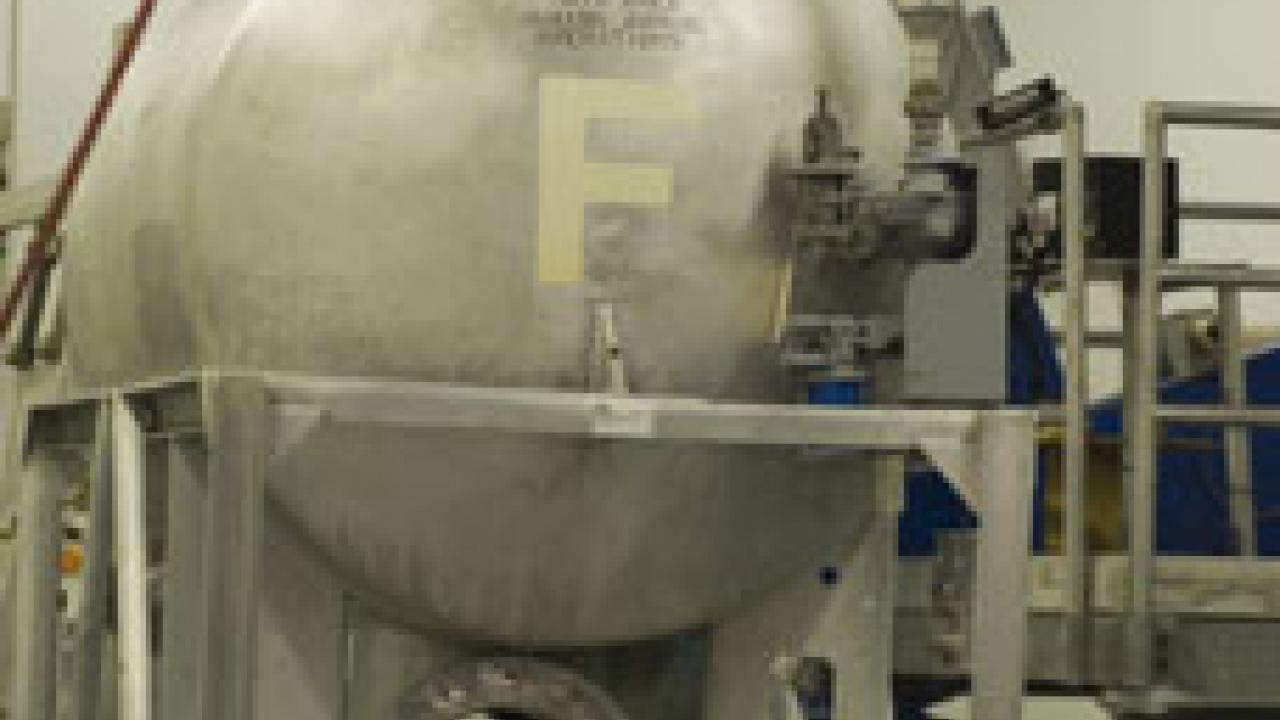When the USDA Forest Service sends heavy aircraft to fight forest fires this summer, they will be doing it with tanks safety-checked with the aid of unique scanning technology from UC Davis.
The Forest Service uses C-130 aircraft on loan from the U.S. Air Force to drop heavy loads of retardant on forest fires. The tanks -- or "Modular Airborne Firefighting Systems" -- used to carry and drop that retardant belong to the Forest Service, and slide into the back of the big transport planes on pallets. The 600-gallon tanks, five to an airplane, have been in use for decades.
The Forest Service hired Dyncorp Inc. to safety-check the tanks for corrosion and potential leaks. Working through UC Davis' office of Technology Industry Alliances, Dyncorp turned to the neutron radiography facility at UC Davis' McClellan Nuclear Radiation Center to scan the tanks for flaws.
"You can't get inside the tanks to inspect them, and a camera only gives a surface view," said UC Davis radiography supervisor Hal Egbert, who conducts the tests. Neutron radiography allows you to look at the inside of the tank in three dimensions and see where material has been lost.
Like a medical X-ray, the neutron scans are recorded on film and analyzed with computer software similar to that used by hospitals. But while X-rays see through water and are stopped by metal, neutrons easily penetrate metal but are stopped by water and corrosion.
Using the neutron scans, Egbert was able to find flaws in the tubes leading out of the tanks, which could have failed in use. He also was able to show that other apparent flaws seen on visual inspection were not significant. Dyncorp was then able to repair the damage.
"We're proud to contribute to the effectiveness of firefighting and the safety of the brave firefighters," said Barry Klein, vice chancellor for research at UC Davis, who oversees the reactor and technology-industry programs. "UC Davis will continue to work to contribute to our communities, the state and the nation, fulfilling our public service mission as a public university."
Ed Hollenshead, the U.S. Forest Service's deputy director of Fire and Aviation Management in California, said, "This is one example of our excellent relationship with UC Davis. We anticipate that this type of cooperative work will grow, and continue to help us fight wildfires safely and effectively."
The U.S. Forest Service, UC Davis and Dyncorp are partners in the Center of Excellence for Aircraft Health Management. Other partners include NASA Ames Research Center, Aerobotics Inc., Hill Engineering LLC and Eclypse International.
Technology Industry Alliances, part of the Office of Research at UC Davis, encourages the establishment of mutually beneficial relationships between university units and industry, for example by licensing and commercializing university technology and strengthening the regional economy by encouraging start-up companies.
Media Resources
Andy Fell, Research news (emphasis: biological and physical sciences, and engineering), 530-752-4533, ahfell@ucdavis.edu
Wallace Mathes, USDA Forest Service, Pacific Southwest Region, (707) 562-9004, wmathes@fs.fed.us
